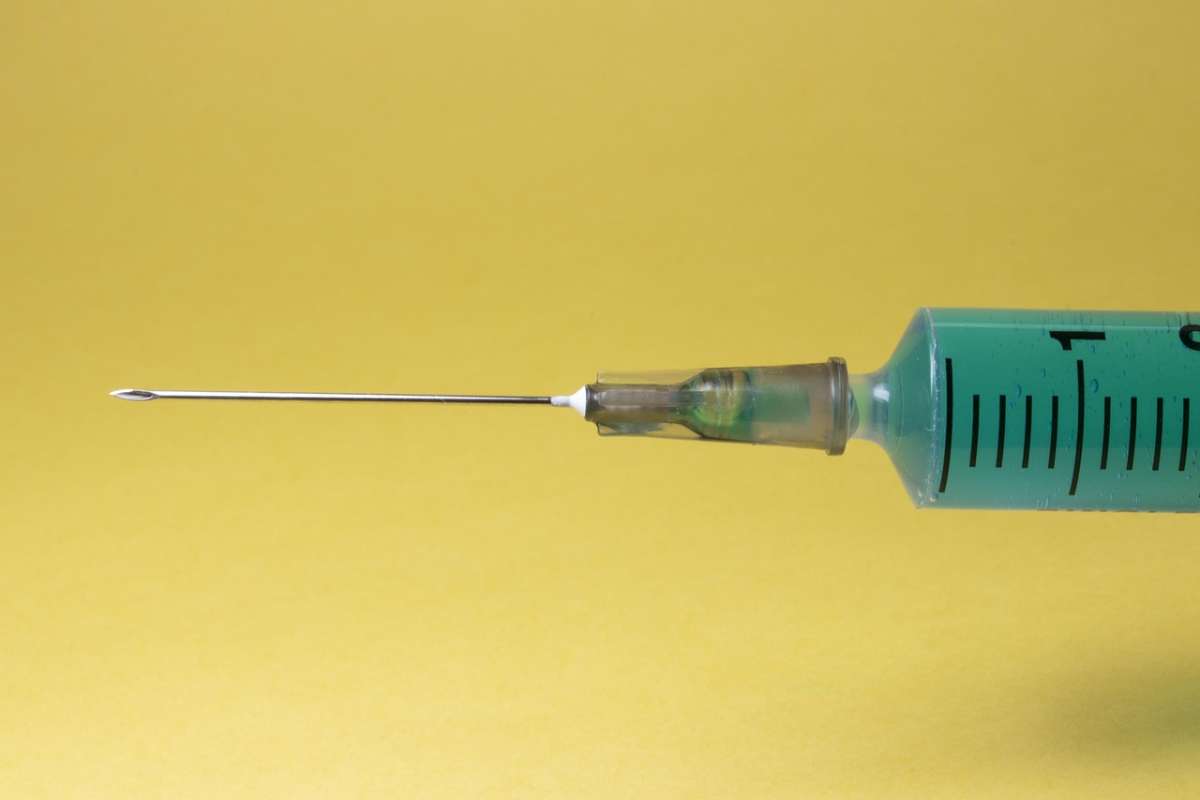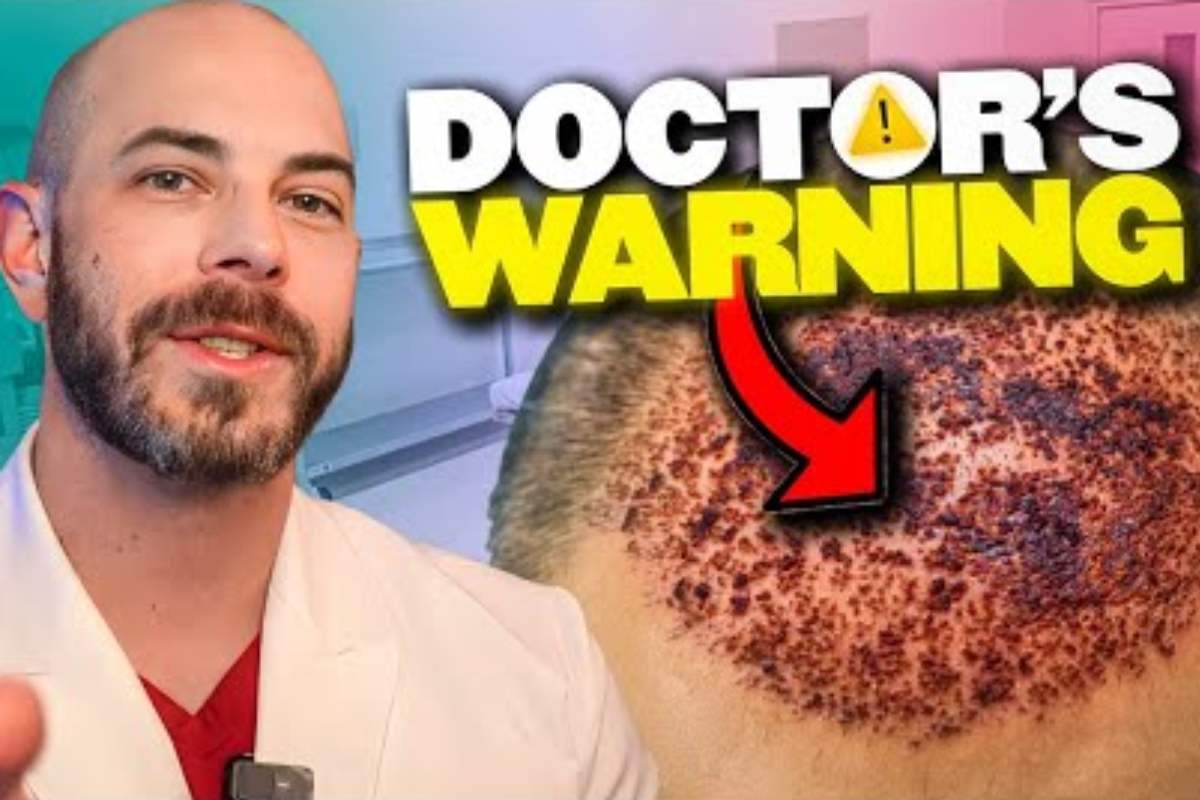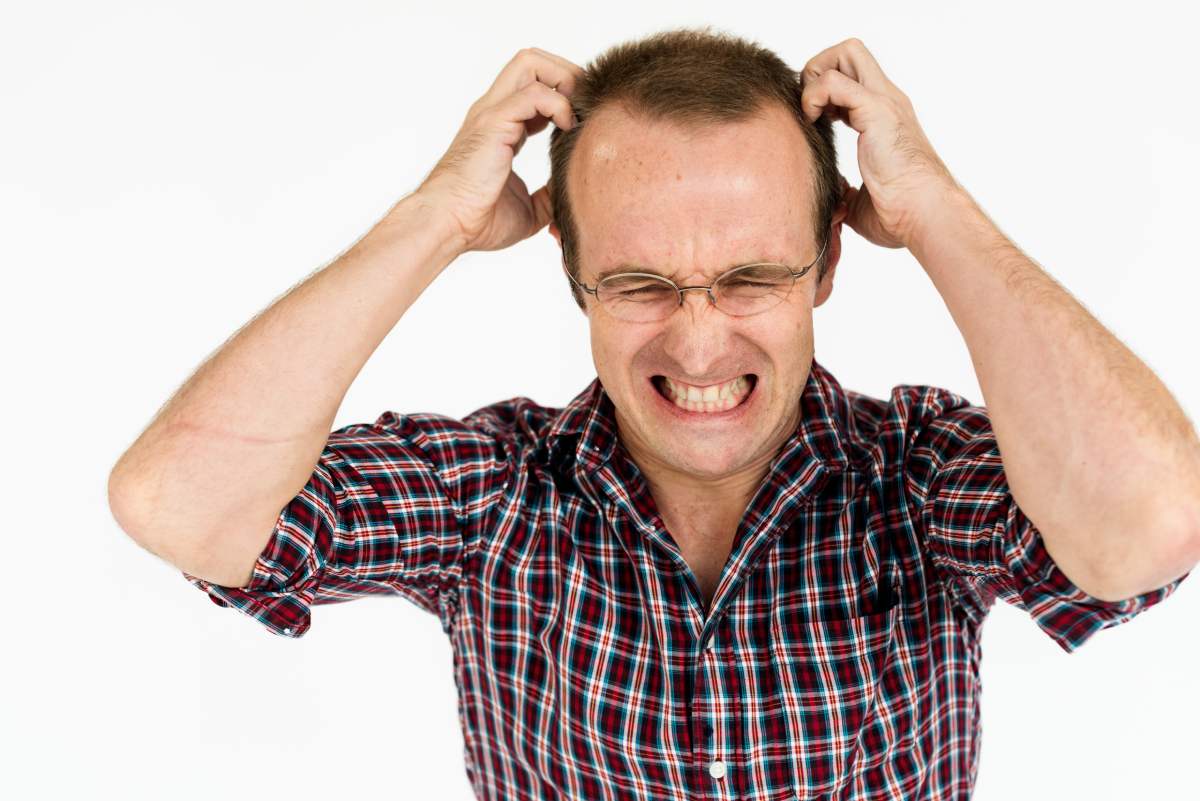Alopecia, the medical term for hair loss, affects millions of people around the world, with some types causing temporary shedding while others lead to permanent hair loss. Hair loss can happen for many reasons, including genetics, autoimmune diseases, stress, and certain hairstyles that put too much tension on the scalp.
There are several types of alopecia, each with its own causes, symptoms, and treatments. Some people may experience patchy hair loss, while others might notice thinning all over the scalp.
Understanding the different types of alopecia is important for finding the right treatment. While some types of hair loss can be slowed down or reversed with medication, others require lifestyle changes or medical procedures like hair transplants.
Recognizing the early signs of alopecia can help prevent further hair loss and improve overall hair health.
What are Some of the Different Types of Alopecia?
Androgenetic Alopecia (Pattern Hair Loss)
Androgenetic alopecia, also called male or female pattern baldness, is the most common type of hair loss. It affects millions of men and women and tends to progress over time.
Causes
This type of alopecia is caused by a combination of genetics and hormones. A key factor is the hormone dihydrotestosterone (DHT), which shrinks hair follicles over time. As the follicles get smaller, they produce thinner and weaker (“miniaturized”) hairs until they stop growing altogether.
Symptoms
- Hairs affected by androgenetic alopecia look like thin, wispy strands that eventually stop growing. This process is termed “miniaturization” of the hairs. Thinner, weaker hairs are easier to see through; thus, the first thing patients typically notice is that more of their scalp is visible than before.
- In men, hair loss predictably affects the hairline, temples, and crown first, progressing to involve the entire top of the scalp. In women, hair loss is frequently more spread out or diffuse, usually causing the most evident thinning at temples and midline part.
Treatments
There are several treatment options to slow down or improve androgenetic alopecia:
- Minoxidil: A topical solution (brand name Rogaine) or oral tablet that helps improve blood flow to stimulate hair growth.
- Finasteride (Propecia, Proscar) and Dutasteride (Avodart): Oral medications that block the conversion of testosterone into DHT to prevent further hair loss. These medications can also be formulated topically.
- Platelet-Rich Plasma (PRP): Growth factors from your own platelets are concentrated and injected into the scalp to improve hair growth.
- Low-Level Laser Therapy (LLLT): A treatment that uses tiny diode lasers to stimulate hair follicles and encourage growth.
- Hair Transplant Surgery: Follicular Unit Extraction (FUE) and Follicular Unit Transplantation (FUT) are procedures that move healthy hair follicles to the balding areas of your scalp.
- Others: Additional non- to minimally invasive treatment options that we routinely discuss and prescribe at Limmer Hair Transplant Center include DHT-blocking shampoos, oral spironolactone (for females), oral vitamins, AlmaTED treatments, and FoLix laser therapy.
How It Differs From Other Types of Alopecia
Unlike autoimmune-related alopecia, androgenetic alopecia is driven by hormones and genetics. Alopecia areata vs. androgenetic alopecia, for example, comes down to the cause. Alopecia areata is triggered by the immune system attacking hair follicles, while androgenetic alopecia happens gradually due to DHT.
Since this type of hair loss is progressive, early treatment is key. Making lifestyle changes, using hair growth treatments, and concealing hair loss with strategic styling can all help manage the condition.
Alopecia Areata
Alopecia areata is an autoimmune condition that causes sudden hair loss. The immune system mistakenly attacks hair follicles, causing hair to fall out in small, round patches. In some cases, it can progress to complete scalp hair loss (alopecia totalis) or total body hair loss (alopecia universalis).
Causes
- Autoimmune reaction: The body’s immune system mistakenly targets hair follicles, causing them to stop producing hair.
- Genetics: A family history of autoimmune diseases may increase the risk.
- Triggers: Stress, illness, or infections can sometimes trigger or worsen the condition. The exact cause is unknown, but researchers believe environmental factors may play a role.
Symptoms
- Sudden, round patches of hair loss on the scalp, beard, or other body areas.
- Smooth skin where the hair has fallen out, without signs of irritation or scarring.
- Possible tingling or itching before hair loss begins.
- In more severe cases, complete loss of scalp or body hair.
Treatments
There is no cure for alopecia areata, but treatments may help regrow hair:
- Corticosteroids: Injections or topical medications that reduce immune system activity.
- Minoxidil (Rogaine): Can stimulate regrowth in some cases.
- Topical Immunotherapy: A treatment that causes a mild allergic reaction to trick the immune system into stopping the attack on hair follicles.
- Systemic Immunomodulators: New and emerging therapies, especially in the class of JAK inhibitors, can help regrow hair in severe cases.
How It Differs From Other Types of Alopecia
Unlike Androgenetic Alopecia, or pattern baldness, which happens gradually due to hormones, alopecia areata is sudden and caused by the immune system. It can also affect any part of the body, not just the scalp.
Since alopecia areata is unpredictable, treatment success varies. Some people experience regrowth, even spontaneously, while others have progressive or recurrent hair loss over time.
Telogen Effluvium
Telogen effluvium is a temporary form of hair loss that happens when more hair than usual enters the resting (telogen) phase of the hair growth cycle. This leads to excessive shedding, usually a few months after a triggering event.
Causes
- Stress or trauma: Physical or emotional stress, such as surgery, illness, childbirth, or a major life event, can shock the body and cause hair shedding.
- Nutritional deficiencies: Low levels of iron, vitamin D, or B vitamins can contribute to hair thinning.
- Hormonal changes: Thyroid imbalances or stopping birth control pills can trigger shedding.
- Medications: Some drugs, like antidepressants or blood pressure medications, may cause hair loss as a side effect.
Symptoms
- Increased hair shedding: Hair falls out in large amounts, especially when washing or brushing.
- Thinning all over the scalp: Unlike pattern baldness, telogen effluvium does not create bald spots but causes widespread thinning.
- No receding hairline: The hairline remains intact, which helps differentiate it from androgenetic alopecia.
Treatments
Since telogen effluvium is often triggered by an underlying issue, treating the cause is the best approach:
- Managing stress: Meditation, exercise, and better sleep habits can improve hair health.
- Correcting deficiencies: Taking supplements or adjusting the diet can help restore hair growth.
- Gentle hair care: Avoiding tight hairstyles and heat styling can reduce breakage.
How It Differs From Other Types of Alopecia
Unlike androgenetic alopecia or alopecia areata, telogen effluvium does not result in permanent hair loss. Once the trigger is removed, hair usually regrows within 3 to 6 months. However, if the underlying issue is not addressed, shedding can continue for a longer period.
Anagen Effluvium
Anagen effluvium is a rapid type of hair loss that happens when hair follicles are damaged during the active (anagen) growth phase. This leads to sudden and widespread hair shedding.
Causes
- Chemotherapy and radiation therapy: These treatments target rapidly dividing cells, including hair follicles, causing immediate hair loss.
- Toxins and chemicals: Exposure to certain drugs, poisons, or pollutants can damage hair follicles.
- Autoimmune diseases: Some conditions, such as lupus, can cause anagen effluvium by attacking hair follicles.
Symptoms
- Sudden hair loss: Unlike telogen effluvium, which causes gradual shedding, anagen effluvium leads to fast and extensive hair loss.
- Loss of scalp and body hair: This condition often affects eyebrows, eyelashes, and body hair as well.
- No visible scalp irritation: The skin remains smooth without itching, scaling, or redness.
Treatments
There is no guaranteed way to stop anagen effluvium, but some options can help manage it:
- Cooling caps during chemotherapy: These may reduce hair loss by limiting blood flow to the scalp.
- Nutritional support: Ensuring the body has the necessary vitamins and minerals, such as iron and vitamin D, can support regrowth.
- Scalp care: Keeping the scalp moisturized and protected from sun exposure can help maintain skin health.
How It Differs From Other Types of Alopecia
Anagen effluvium differs from telogen effluvium, as it affects hair in the growth phase rather than the resting phase. It also differs from androgenetic alopecia since it is not caused by hormones or genetics. The good news is that once the underlying cause is removed, such as stopping chemotherapy, hair usually regrows over time, although it may regrow a different color or texture than before.
Traction Alopecia
Traction alopecia happens when hair is repeatedly pulled or stressed over a long period. Unlike other types of alopecia caused by genetics or autoimmune conditions, this type of hair loss is mechanical and, thus, preventable.
Causes
- Tight hairstyles: Wearing tight ponytails, braids, buns, or dreadlocks can pull on hair follicles, leading to damage over time.
- Hair extensions and weaves: The weight and tension from these styles can weaken the roots.
- Frequent heat styling and chemical treatments: Straighteners, relaxers, and harsh dyes can make hair more fragile and prone to breakage.
Symptoms
- Thinning along the hairline: The most common sign is hair loss near the temples or forehead.
- Scalp tenderness or bumps: Prolonged tension can cause inflammation, redness, and even small sores.
- Short, broken hairs in affected areas: Over time, hair may stop growing back in the damaged spots.
Treatments
- Avoid tight hairstyles: Looser styles reduce tension on the scalp.
- Limit chemical and heat treatments: Giving hair a break from styling tools and chemicals can prevent further damage.
- Hair transplant: In longstanding cases of traction alopecia, hair regrowth may not be possible. At this point, hair transplant could play a role in restoring the affected area.
How It Differs From Other Types of Alopecia
Unlike androgenetic alopecia, which is caused by hormones, or alopecia areata, which is an autoimmune condition, traction alopecia results from repeated physical stress on the hair. The good news is that if caught early, the damage can be reversed. However, if the pulling continues, hair follicles may become permanently damaged, leading to lasting bald spots.
Cicatricial (Scarring) Alopecia
Cicatricial alopecia, also known as scarring alopecia, is a group of rare conditions that destroy hair follicles and replace them with scar tissue. Unlike other forms of alopecia, this type of hair loss is permanent because the follicles can no longer produce hair.
Causes
- Autoimmune and autoinflammatory conditions: Lichen planopilaris (LPP) and its variant frontal fibrosing alopecia (FFA), central centrifugal cicatricial alopecia (CCCA), discoid lupus erythematous (DLE), folliculitis decalvans, and dissecting cellulitis are all conditions in which excess inflammation destroys hair follicles, leading to scarring.
- Infections: Bacterial or fungal infections can trigger inflammation that results in scarring.
- Trauma or burns: Physical damage to the scalp, including burns or injuries, can lead to hairless scar formation.
Symptoms
- Patchy hair loss with scarring: Affected areas appear smooth and shiny with no visible hair follicles.
- Scalp discomfort: Burning, itching, or tenderness may occur before hair falls out.
- Redness, scaling, or pustules: Some cases involve inflammation and scalp irritation before scarring develops.
Treatments
- Anti-inflammatory medications: Steroids or immunomodulatory drugs may help slow down disease progression.
- Antibiotics or antifungals: These can help if inflammation or an infection is contributing to hair loss.
- Hair transplant surgery: In some cases, if the condition is no longer active, hair restoration may be an option.
How It Differs From Other Types of Alopecia
A key difference between frontal fibrosing alopecia vs. androgenetic alopecia is that frontal fibrosing alopecia is an autoimmune condition that causes a receding hairline and scarring, while androgenetic alopecia is a gradual, hormone-driven process that does not involve inflammation or scarring.
Unlike telogen effluvium or alopecia areata, where hair has a chance to regrow, scarring alopecia is permanent. Early diagnosis and treatment are crucial to slowing its progression and preserving as much hair as possible.
Differing Types of Hair Loss
Alopecia comes in many forms, each with its own causes and treatments. Some types, like telogen effluvium, are temporary and triggered by stress or vitamin deficiencies, while others, like androgenetic alopecia, are genetic and progressive. Autoimmune conditions such as alopecia areata and frontal fibrosing alopecia cause the body to attack its own hair follicles, leading to sudden or permanent hair loss. Scarring alopecia is the most severe type, as it results in irreversible damage to the scalp.
The best way to determine which type of alopecia you may be suffering from is by looking at symptoms, family history, and any recent health changes. Consulting a dermatologist or hair loss specialist can help identify the cause and find the right treatment plan.
Thankfully, for those dealing with hair loss, there are options. Medications like minoxidil and finasteride can help slow hair loss, while hair transplants may restore hair in severe cases.
Early intervention is key. Whether hair loss is temporary or permanent, understanding its type and cause can make all the difference in finding the right solution.







